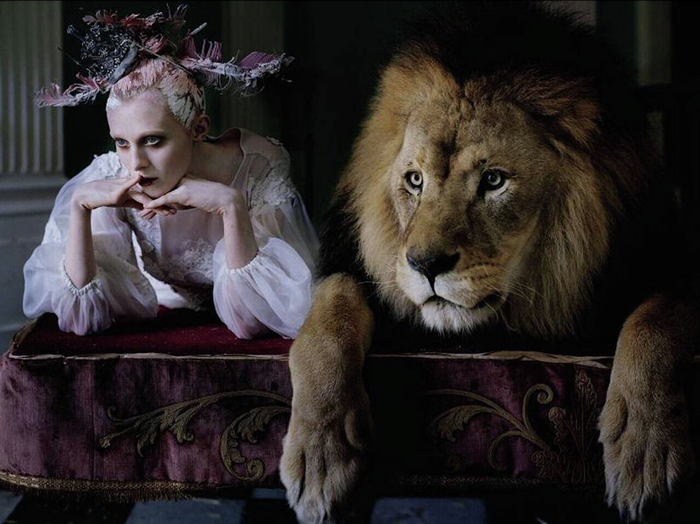A day of romance or of capitalising on love?
Pink, ruffles, glitter and kitsch. Isabel Sebode explores how the marketing ploy of Valentine’s Day has caused the emotional aspect of the day to become secondary to its economic potential.
You walk into a store, look through the different sections, past the denim and the pink glittery dresses that you would never wear. You don’t find what you are looking and, as the rational economic being that you are, you leave empty-handed – we do after all have a budget and the Sainsburys shop won’t pay itself. One week later it’s the 13th of February, you go into the same store, and – a big display. NEW VALENTINE’S COLLECTION OUT NOW! The pink, the glitter, the ruffles – you don’t need it but why not? It’s Valentine’s Day and maybe you’ll go out with your friends or that special someone. You get yourself that light pink, glittery dress with the faux fur trimmings that gives you ultimate early 2000s meets Barbie vibes. You’ll probably wear it once but it’s definitely worth it. After all, it was an exclusive Valentine’s Day collection.

This is the power of marketing – a power held by brands that understand our behaviour and proneness to buy when we were are presented with a suitable occasion. This behaviour of consumption is not exclusive to clothing: we see the same thing with cards, chocolates and other small gifts. Whilst, economically seen, humans are considered to be fully rational beings, we still seem to have no problems buying a Lindt chocolate box for five pounds when we can usually get more for less. Of course, it does make a nice gift, especially in an age where we never seem to find time for anything. Here buying pre-made romantic gestures seems like a good option to show that you care without the effort.
Yet, should this be desirable? Valentine’s Day, Easter, Christmas all seem to be the (fashion) industry’s chance to encourage us to buy what we would usually not even consider. Why not buy that one outfit that might look cute on Valentine’s Day but that we will never wear again? In a more and more environmentally conscious society, it seems absurd to me that our awareness of fast-fashion and sustainability of clothing seems to be wholly disregarded when any 'special occasion' arises. By all means, making decisions to feel good is a necessary form of self-care, yet especially on occasions such as Valentine’s Day our need for ‘retail therapy’ is most beneficial for banks, not our mental health or wallet.
This form of marketing is known as ‘trendjacking’. It is defined as “the act of capitalizing on an existing trend in order to bolster one’s brand in the marketplace”, such as when brands benefit from Valentine’s Day by branding their pink dresses as a Valentine’s Day exclusive collection. The consumer perceives the items to be unique, becoming more inclined to buy them as the justification of the purchase is presented to them by the brand.
Brands such as Nastygal, Boohoo, Prettylittlething (all owned under the parent organisation of Boohoo.com) follow the same marketing ploy: they provide the occasion to spend money for us, showing us why we need to buy. The caption to a recent picture posted by Boohoo perfectly captures this:
The ‘quirky’ Galentines tries to establish a connection with the consumer, the emojis attempt to make the brand relatable and contemporary and the colloquialisms present the Instagram account as if it was a person, not a brand. Through the flood of Valentine’s Day posts, the consumer becomes aware of an occasion they may have forgotten. Suddenly something we normally would not buy is excused and we find ourselves wearing items we would never pick up from the rack, simply because we have been bombarded with the pink, patterned clothes that we should be wearing.
Brands can only benefit from this. In a similar marketing ploy to Valentine’s Day, China celebrates its annual ‘Single’s Day’ on the 11.11. Seemingly the antithesis to Valentine’s Day, the marketing effect is the same. People buy, simply because there is an occasion and the effects are substantial. According to Reuters, the Chinese retailer Alibaba Group Holding Ltd’s sales for its 24-hour Singles’ Day shopping blitz hit a record $38.4 billion, more than U.S. rival Amazon.com Inc’s haul last quarter from online store sales. Companies evidently benefit significantly more from our random spending on items we might never use again than we do: seeing this chance the marketing department is on attack, and we fall into the trap. As a result, the genuine day of love has been transformed into a day of consuming pink items. Fun.
Is this day still about love and gratitude for others?
It is a shame, since I believe days such as Valentine’s Day, Mother’s Day and others are socially valuable, however, they seem to have lost their focus. Is this day still about love and gratitude for others, or has it turned into a day where we allow ourselves to be enticed by the marketing strategies of brands we have decided to steer away from? Why do we seem to make excuses with all of our fashion and consumption morals, simply because it is the 14th of February?
Of course, using these days as an occasion to wear something that we usually wouldn’t is a great way to step out of ones fashion comfort zone. However, simply buying for the sake of it and not wearing the clothes after is neither good for our environment, nor for our wallet. Perhaps this Valentine’s day we should take a step back to prevent being enticed into the pink, sparkly world of low-quality, throw-away fashion. Instead of buying that one new outfit that seems so ‘cute’ simply because it was perfectly displayed, rework your closet to wear something that makes you feel the best. It doesn’t have to be red, pink, patterned or glittery; in any case, this should be the day to show yourself some love rather than feeling forced to engage in the mass consumerism.
 Comment / Plastic pubs: the problem with Cambridge alehouses 5 January 2026
Comment / Plastic pubs: the problem with Cambridge alehouses 5 January 2026 News / Cambridge businesses concerned infrastructure delays will hurt growth5 January 2026
News / Cambridge businesses concerned infrastructure delays will hurt growth5 January 2026 News / New movement ‘Cambridge is Chopped’ launched to fight against hate crime7 January 2026
News / New movement ‘Cambridge is Chopped’ launched to fight against hate crime7 January 2026 News / Uni-linked firms rank among Cambridgeshire’s largest7 January 2026
News / Uni-linked firms rank among Cambridgeshire’s largest7 January 2026 News / AstraZeneca sues for £32 million over faulty construction at Cambridge Campus31 December 2025
News / AstraZeneca sues for £32 million over faulty construction at Cambridge Campus31 December 2025










